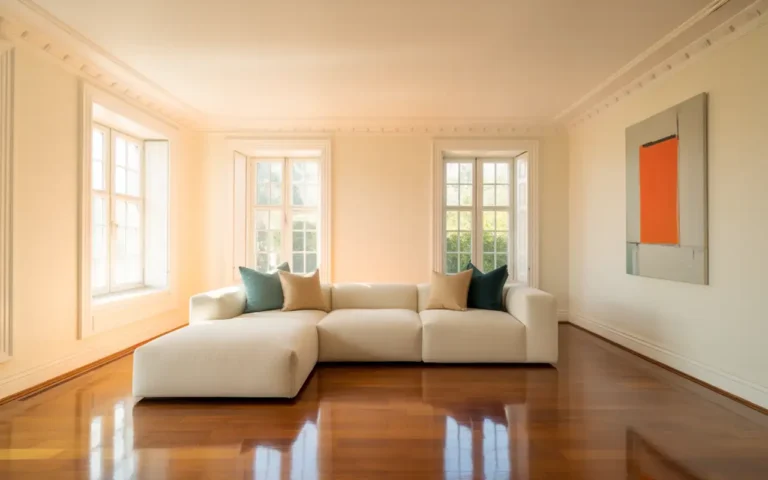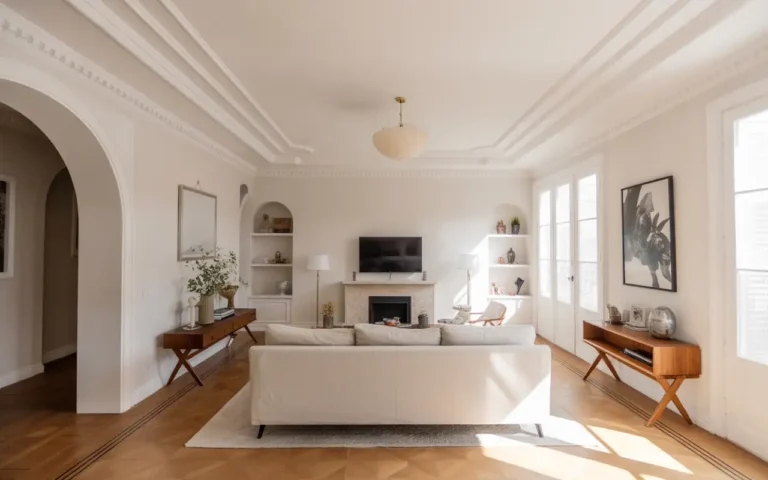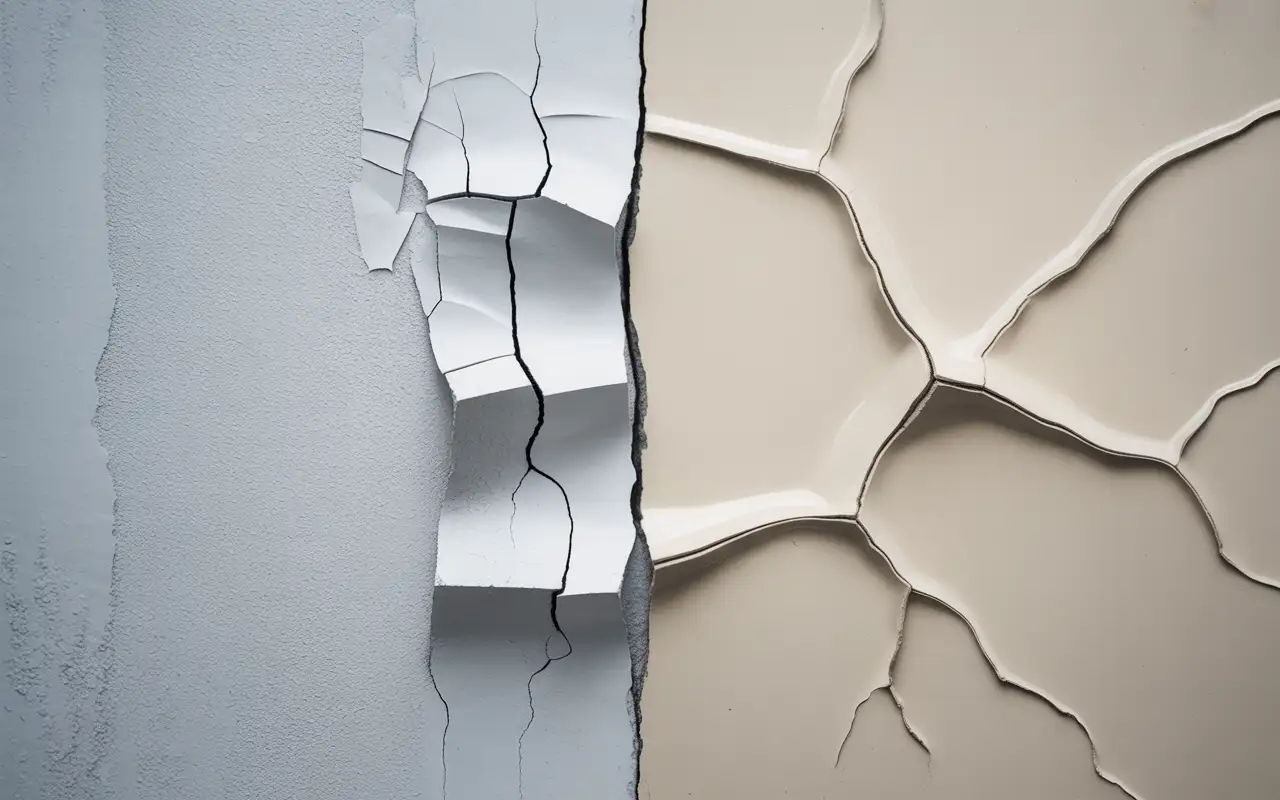Crown molding transforms ordinary rooms into spaces with visual appeal and character. This decorative trim creates a smooth transition between walls and ceilings while adding architectural interest. Many homeowners wonder about different styles and how to pick the right one for their space.
Understanding the types of crown molding helps you make smart design choices. Each style offers unique benefits and works better in certain rooms. This guide covers five popular crown molding options and shows you exactly how to use them.
Table of Contents
ToggleWhat is Crown Molding?

Crown molding is decorative trim installed where walls meet ceilings. Originally designed to hide gaps between building materials, it now serves as a key design element. This architectural detail draws the eye upward and makes rooms feel taller and more finished.
Modern crown molding comes in various materials including wood, MDF, plaster, and polyurethane. The trim can be painted or stained to match your decor. Quality crown molding installation creates clean lines and adds value to your home.
Is Crown Molding Out of Style?
Crown molding remains a timeless design choice when selected properly. The key is choosing crown molding styles that match your home’s architecture. Traditional homes benefit from classic profiles while modern spaces look better with simpler designs.
Current design trends favor crown molding in main living areas. Many new construction homes include this feature in kitchens, dining rooms, and living spaces. The trick is picking the right size and style for your specific room and ceiling height.
Where Should You Install Crown Molding?
Not every room needs crown molding, but certain spaces benefit greatly from this upgrade. Focus on areas where you entertain guests and spend the most time. These rooms create the biggest impact and return on investment.
Best Rooms for Crown Molding
- Living Rooms: Crown molding adds elegance and draws attention to architectural features. Large living spaces can handle wider profiles while smaller rooms need simpler styles.
- Dining Rooms: Formal dining areas benefit from ornate crown molding designs. This space traditionally features more decorative elements and crown trim enhances the formal atmosphere.
- Kitchens: Kitchen cabinet crown molding creates a finished, custom look. Crown molding for kitchen cabinets bridges the gap between upper cabinets and ceilings for a built-in appearance.
- Master Bedrooms: Bedrooms can use crown molding to create a cozy, upscale feel. Choose simpler profiles that won’t overwhelm the relaxing atmosphere.
Different Types of Crown Molding and Their Best Uses

1. Traditional Crown Molding
Traditional crown molding features the classic S-curve profile that works in most homes. This versatile style includes gentle curves and sometimes a small bead detail at the base. The design complements both formal and casual decorating styles.
Best Applications:
- Living rooms with standard 8-9 foot ceilings
- Dining rooms in traditional or transitional homes
- Bedrooms where you want subtle elegance
- Hallways to create visual continuity
Traditional profiles come in various sizes from 3 inches to 8 inches tall. Smaller profiles work in compact rooms while larger ones suit spacious areas with higher ceilings. This style is easy to install and widely available at most home improvement stores.
2. Egg and Dart Crown Molding
Egg and dart molding features repeating oval and arrow-shaped patterns inspired by ancient Greek architecture. This ornate style adds sophistication and works best in formal settings. The detailed pattern creates visual interest and historical charm.
Best Applications:
- Formal dining rooms
- Home libraries or studies
- Victorian or Colonial-style homes
- Spaces with high ceilings over 10 feet
Egg and dart patterns can be carved from wood, cast in plaster, or molded in polyurethane. Wood versions cost more but offer the most authentic look. This style requires careful installation to align the patterns at corners properly.
3. Dentil Crown Molding
Dentil molding includes evenly spaced rectangular blocks along the bottom edge. This design element comes from Classical architecture and adds structured detail. The repeating block pattern creates rhythm and visual interest without being overly ornate.
Best Applications:
- Colonial or Neoclassical homes
- Formal living rooms
- Kitchen cabinet crown molding applications
- Exterior trim on porches or dormers
Dentil spacing varies from tight patterns with small blocks to wider spacing with larger elements. Consider your room size when choosing dentil proportions. Smaller dentils work in compact spaces while larger patterns suit bigger rooms.
4. Cove Crown Molding
Cove molding features a simple curved profile that creates a gentle arc between walls and ceilings. This understated style works well in both traditional and contemporary spaces. The smooth curve adds softness without competing with other room elements.
Best Applications:
- Modern or minimalist interiors
- Bedrooms and bathrooms
- Smaller rooms with lower ceilings
- Spaces where you want subtle definition
Cove molding installation is straightforward since the simple profile hides minor imperfections. This style comes in various sizes and can be painted to match walls or ceilings. It’s an excellent choice for first-time crown molding installations.
5. Step Crown Molding
Step molding features angular, geometric profiles instead of curves. This contemporary style includes distinct horizontal and vertical lines that create a modern appearance. Step profiles work well in houses with clean, linear design elements.
Best Applications:
- Contemporary and modern homes
- Art Deco or mid-century modern spaces
- Rooms with geometric tile or architectural features
- Spaces with clean, minimal decoration
Step molding comes in various configurations from simple two-step designs to complex multi-level profiles. The angular lines complement modern furniture and fixtures. This style requires precise installation since imperfections show more clearly than curved profiles.
Crown Molding Materials and Finishes
Wood Crown Molding
Solid wood offers the most premium option with natural grain patterns and staining possibilities. Popular wood choices include pine, oak, maple, and cherry. Wood crown molding can be painted or stained to match other trim elements.
MDF and Composite Materials
Medium-density fiberboard (MDF) provides a cost-effective alternative to solid wood. This material takes paint well and won’t crack or split like wood. MDF works best in interior applications and must be painted since it cannot be stained.
Polyurethane and Flex Molding
Polyurethane molding offers durability and moisture resistance. Flex varieties bend around curved walls and arches. This material is easy to install and maintain. Most polyurethane molding comes pre-primed for painting.
Plaster Molding
Custom plaster molding provides the most authentic look for historic homes. Skilled craftsmen can create intricate patterns and details. Plaster costs more than other materials but offers unmatched customization options.
Crown Molding Size and Proportion Guidelines
Choosing the right crown molding size depends on ceiling height, room size, and architectural style. Follow these general guidelines for best results.
Ceiling Height Considerations
- 8-foot ceilings: 2-4 inch crown molding
- 9-foot ceilings: 3-5 inch crown molding
- 10-foot ceilings: 4-6 inch crown molding
- 11+ foot ceilings: 5-8 inch crown molding
Room Size Factors
Larger rooms can handle wider crown molding profiles. Small spaces look better with simpler, narrower designs. Consider the room’s proportions and existing trim elements when making your selection.
Installation Tips and Considerations
Professional vs DIY Installation
Simple crown molding styles like cove profiles are relatively easy to install for experienced DIYers. Complex patterns like egg and dart require professional installation for best results. Consider your skill level and the crown molding design complexity.
Cost Factors
Crown molding costs vary by material, style, and installation method. Basic MDF profiles start around $1-3 per linear foot while custom plaster work can cost $15-25 per foot. Factor in paint, primer, and installation supplies for accurate budgeting.
Maintenance Requirements
Painted crown molding needs occasional touch-ups and cleaning. Wood stained finishes may require periodic refinishing. Polyurethane and MDF options offer the lowest maintenance requirements.
Common Crown Molding Mistakes to Avoid
Improper Proportions
Avoid crown molding that’s too large for your ceiling height or too small for your room size. The trim should complement your space without overwhelming it.
Mismatched Styles
Keep crown molding consistent with your home’s architectural style. Modern profiles clash with traditional decor and vice versa.
Poor Installation Quality
Gaps at joints, uneven reveals, and wavy lines ruin the crown molding appearance. Invest in quality installation for professional results.
Crown Molding Design Ideas
Layered Molding Profiles
Combine different crown molding elements for a custom look. Add frieze boards or decorative trim pieces below the main crown for added depth and visual interest.
Painted vs Stained Finishes
White or cream painted crown molding works in most color schemes and makes ceilings appear taller. Stained wood finishes complement natural wood furniture and built-ins.
Accent Lighting Integration
Install LED strip lighting above crown molding for dramatic uplighting effects. This technique highlights ceiling details and creates ambient room lighting.
Give Your Home a Refresh with Crown Molding from SD Custom Painting
Transform your living spaces with professional crown molding installation and finishing. San Diego Custom Painting specializes in crown molding projects that enhance your home’s architectural beauty. Our experienced team handles everything from material selection to final painting.
We offer complete interior painting services in San Diego including crown molding installation, wall preparation, and finish work. Our professionals understand how different crown molding styles complement various architectural elements and color schemes.
Contact San Diego Custom Painting for a consultation about your crown molding project. We’ll help you select the perfect different types of crown molding for your home and ensure flawless installation and finishing.
Frequently Asked Questions
What is the most popular crown molding style?
Traditional crown molding with S-curve profiles remains the most popular choice. This versatile style works in most homes and complements various decorating styles.
How do I choose crown molding size?
Select crown molding based on your ceiling height and room proportions. Generally, use 3-4 inches for 8-foot ceilings and increase proportionally for taller spaces.
Can I install crown molding myself?
Simple crown molding profiles are suitable for DIY installation if you have woodworking experience. Complex patterns and large rooms benefit from professional installation.
What rooms benefit most from crown molding?
Living rooms, dining rooms, and kitchens show the biggest improvement from crown molding installation. These main living areas create the most impact for your investment.
How much does crown molding cost?
Crown molding costs range from $3-15 per linear foot depending on material and complexity. Professional installation adds $2-8 per foot to the total project cost.





